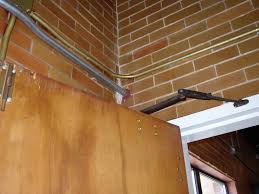
Fire Barriers are used to separate spaces in buildings and to protect employees from the danger of fire, smoke, and viruses. Fire barriers are required by international building code regulations to have a fire resistance rating of at least one hour. However, some high occupancy buildings require higher fire resistance ratings. In general, fire barriers have a higher fire resistance rating than smoke partitions.Have a look at www.firebarrierexperts.com/understanding-the-differences-between-fire-partitions-and-fire-barriers for more info on this.
A building’s fire barrier is usually made from concrete blocks, reinforced concrete, or drywall. Older fire walls were often made from brick. Currently, fire barrier walls are commonly constructed from drywall, gypsum board partitions, and wood framed studs. Fire walls are extremely effective in providing a protective barrier against fire.
A fire barrier is a wall that extends from the ceiling or floor to block the spread of fire. They can also cover hidden spaces such as stairwells or passageways. These barriers are supported by interior structures, and are usually two to three hours in length. A fire barrier may also be constructed to span the length of an entire floor or roof.
Fire barriers are a vital part of any fire protection plan. Fire partitions and fire barriers are often used interchangeably, but the distinction between them is important. A fire partition is a partition that separates areas within a building, while a fire barrier is a wall that prevents smoke and flames from spreading throughout the entire building.
While fire walls are designed to stop fire from spreading through a building, they differ greatly in their ability to withstand high temperatures. They have different characteristics that make them the right choice for your building. A reputable company will help you decide which type of fire protection solution will best fit your needs. Once you have decided on a type of system, you need to make sure that it is compatible with the type of building.
Firewalls, in contrast to interior fire separations, are continuous and remain standing even when one side collapses. Firewalls also retain their fire resistance rating. Different types of firewalls have different resistance times, but they generally offer three to four hours of fire protection. In addition to that, fireproof firewalls provide additional protection against a fire for an entire building.